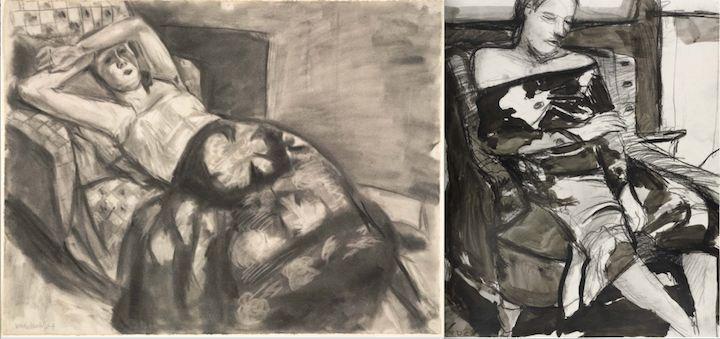Matisse/Diebenkorn at SFMOMA
A major exhibition that explores the connections made by Bay Area artist Richard Diebenkorn (1922-1993) with Henri Matisse (1869-1954) opened last week at SFMOMA, organized in collaboration with the Baltimore Museum of Art [BMA].
Diebenkorn, known more for the large abstractions through which he sought to convey the emotive qualities of California light and space, began to study the works of Matisse in museum exhibitions, including BMA, which holds the largest collection of works by the French Modernist in America. As his interest deepened, and he began to receive critical acclaim for his pared down representational paintings, Diebenkorn gained access to the private collection of Sarah Stein during the late 1950s and early ‘60s. During this period he produced many large-scale, complex works on paper, in which he took realism through an arc of abstraction, then adding a touch of realism that made these landscapes, still lifes and architectural studies finished works on their own.
In 1988, the Museum of Modern Art presented a major exhibition of Diebenkorn’s drawings, organized by John Elderfield. Comprised of over 180 works ranging from sketches to finished works as highly developed as any of the artist’s paintings, the show revealed the importance his study of works by Matisse had had on his own art and process. Info Today, this connection is made evident again in the exhibition in San Francisco—inspired by a Diebenkorn drawing of a seated woman [below, right] in the BMA collection that echoed Matisse’s drawings of reclining models [below, left].

While Matisse and Diebenkorn were separated by time and distance, their cultures and immediate concerns quite different, both were deeply engaged in a struggle to avoid descriptiveness in their art. Even in Diebenkorn’s “representational” paintings of the 1950s, he reduced landscape, still life and figure studies to elemental passages that, in their telegraphic depictions of space and matter suggest that time has escaped before leaving its mark. Like Matisse, he sought to shape interiors using flat planes of color, somehow ordering the clutter of the studio into a harmony of forms. The women he drew, often in staccato bursts of charcoal, exude the kind of “luxe, calme, et volupte” sensuality that Matisse made central to his figural works.

Both artists repeatedly portrayed their studios, merging interior space with the surrounding landscape, combining the seclusion of a very private workspace with the atmosphere of their chosen locales. Diebenkorn had moved from San Francisco to the Ocean Park neighborhood of Santa Monica in 1966; it was here that he created the eponymous series in which he abstracted the light and atmosphere of the nearby Pacific Ocean into compositions whose foundations can be traced to a number of Matisse’s majestic interiors, such as Goldfish and Palette, 1914, in which black becomes a primary color.
In liberating color from a descriptive tool to a design principle, Matisse paved the way for what followed, from the cubism of Picasso and Braque to the elemental abstraction of Mark Rothko—and to Richard Diebenkorn’s intense poetics of space in the Ocean Park series.
Matisse/Diebenkorn continues through May 29 at SFMOMA. 151 Third Street, San Francisco, CA. Info The museum offers a tour of the exhibition daily at 1:30 pm. Info


